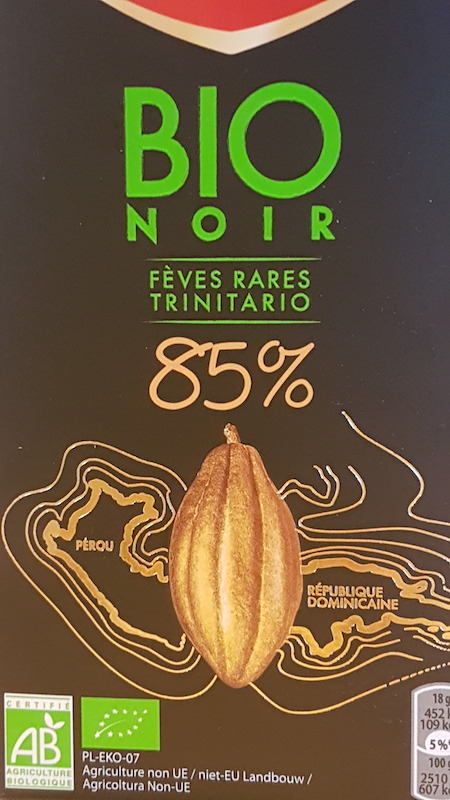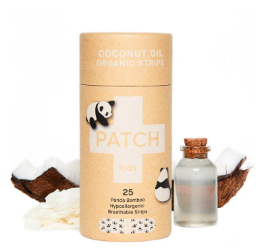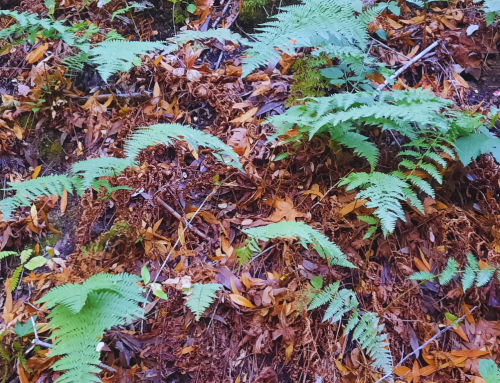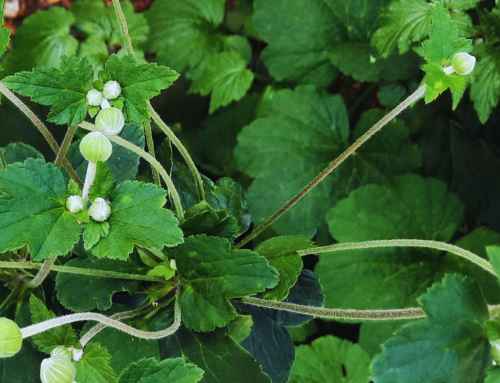Last week, green health tips became the most googled topic in our family. With cold weather, our sustainable living became threatened by a mean virus. All of us fell sick, except my husband Jim and our French bulldog Fleur. My three musketeers were all seriously affected. I thus decided to follow my doctor’s instructions strictly and did not involve the kids in my green health experiments. I mainly tried the suggestions outlined here on myself.
1) Don not take unnecessary medications.
A Harvard Medical School Health Letter states that “Our bodies only use a fraction of any drug we take; the rest gets excreted. Pharmaceuticals in wastewater adversely affect ecosystems. So for your own sake and that of the water supply, don’t take unnecessary medications.”
I used to take 1 g of paracetamol or ibuprofen at once whenever I was sick or in pain. In retrospect, only 500 mg would probably have been enough. If I need to take these drugs in the future, I will start with just 500 mg.
2) Superfoods and natural remedies to fight the cold
While taking care of my sick boys, I inevitably got their bug 🙁. In order to get better, this time, I decided to take only natural remedies. Hopefully, my little green health steps will contribute to protecting the ecosystems from pollution caused by pharmaceuticals.
Superfoods containing lots of proteins
Lisa Evans lists the superfoods below, among others, as great choices to battle colds:
Yogurt has a lot of protein, but also many probiotics that reinforce the immune system. The good bacteria in yogurt apparently do not allow bad ones to multiply. As presented in the post on greener beauty and personal care, a beautiful side effect of my green journey was my husband’s decision to buy a yogurt maker. Lucky me – I was pampered with a lot of yogurt last week!
Eggs. In addition to protein, eggs contain many vitamins and minerals. For instance, B6 and B12 are among them, both important for a healthy immune system.
Nuts. I knew that nuts have a lot protein, but I also learned that “nuts are also an excellent source of selenium and zinc – two minerals that are essential for immune system health.” With our three walnut trees, this was easy to implement. My husband also recently bought a selection of various nuts that he keeps in the car as treats for our boys. Before, we used to have candies, but seeing the quantity that the boys consumed, Jim decided to switch to a healthier choice😊

Superfoods – vegetables
Dark leafy greens. Lisa Evans writes: “Although you may think of citrus when it comes to getting more vitamin C, bell peppers and dark leafy greens such as kale, spinach, romaine lettuce, brussels sprouts and broccoli pack a better punch.” Fortunately, we had fresh local organic spinach leaves in our weekly vegetable basket!
Carrots and sweet potatoes. While I already knew about some of these cold remedies, I was surprised to find carrots and sweet potatoes on the list. MacMillan and Sass argue, however, that as these vegetables contain beta-carotene, “when we eat these foods, our bodies convert this organic compound into vitamin A, which is essential for maintaining a strong immune system. Vitamin A is especially important for areas that go haywire when we catch a cold: It keeps the mucous membranes that line our nose and throat—one of the body’s first lines of defence—healthy and functioning properly.”
Spices and fruits
Garlic. According to Medical News Today, “Garlic may help fight off a common cold because it has antibacterial and antiviral properties.” Amanda MacMillan and Cynthia Sass provide a long list of superfoods. As to garlic, they write: “A 2001 study in the journal Advances in Therapy found that people who took garlic supplements for 12 weeks between November and February got fewer colds than those who took a placebo. And of those who did get sick, those who took the garlic supplement felt better faster.”

In Estonia, we love dark garlic bread. Therefore, I decided to put some raw garlic slices on bread and ate it like that! I have to admit that Jim was not such a fan of this treatment😊.
Citrus fruits still remain great to eat when sick with a cold. I usually buy lemons, but this time I ate a lot of French organic tangerines. These were also part of our vegetable and fruit basket.
Some other natural remedies to fight colds
Honey is a remedy that I have always used with a cold. In general, I love honey, and it is part of my regular diet. From different authors, I preferred what Sam Milbrath had to say about the power of honey:
“Forget cough syrups and lozenges, raw honey is a great, all-natural cough suppressant. Just like cough syrups, it soothes and coats your throat, but also promotes antioxidants, boosts your immune system and increases disease-fighting polyphenols in your blood. Having a spoonful of honey before bed causes your brain to produce melatonin, a natural sleep aid. We all know how important rest is when battling something. Raw local honey should not to be confused with commercial honey, which is heavily processed, often chemically refined and void of many health benefits.”
Echinacea. This was also a new find for me. I had not heard about this remedy before. Healthline writes: “Native Americans have used the herb and root of the echinacea plant to treat infections for more than 400 years. Its active ingredients include flavonoids, chemicals that have many therapeutic effects on the body. For example, flavonoids can boost your immune system and reduce inflammation.” I put it into hot water and drank it like a tea. It is not my preferred herbal tea, but it was better than I thought!
Less-known natural remedies to fight colds
Extra-virgin olive oil. I used to be also ignorant of the link between olive oil and cold treatment, but MacMillan and Sass state that extra-virgin olive oil “possesses anti-bacterial properties that can reduce the risk of becoming sick.” In connection with colds, it seems to be thus more of a preventive help.
Dark chocolate was also on the list of MacMillan and Sass. They argue that “ounce for ounce, pure cocoa contains more of the disease-fighting antioxidants known as polyphenols than most berries—and it’s loaded with zinc, to boot.”

It’s impossible to say which of these natural remedies made the trick, but my fever did not climb very high, and I got well in 2 days!
3) Natural pain relief
As mentioned, paracetamol and Ibuprofen have been my default remedies for years whenever I’m in pain. Yet after a week of treating a hip problem with ibuprofen, I got gastritis this year. Dave Asprey writes about ibuprofen that it “can damage your gut lining, wreck your gut bacteria, and increase your risk of heart attack and stroke.” I thus welcomed this green health week as a chance to look for alternatives to ibuprofen.
Eucalyptus oil. One natural pain reliever that I tried for the first time last week was eucalyptus oil. Medical News Today writes about this remedy: “This herbal remedy from the Eucalyptus plant may help reduce pain, swelling, and inflammation in the body.” It is very strong and should be diluted before being applied topically.

Ginger root has been among the remedies I use for colds, but I was surprised to learn that it is also used for pain relief. According to Medical News Today, a systematic review carried out in 2015 “found that ingesting 2 grams of ginger per day modestly reduced muscle pain from resistance exercise and running when people took it for at least 5 days. The researchers also suggest that ginger may accelerate recovery and reduce inflammation related to exercise.”
To be tested in future
Turmeric, Boswellia, Valerian root. I did not manage to try these green health tips out this time, but all three are on the list of natural remedies that I want to try out in the future. Referring again to Medical News Today:
“curcuma, the active ingredient in the spice turmeric, has pain-relieving qualities. A small-scale 2014 study found that curcuma extract is as effective as ibuprofen for pain management in the treatment of knee osteoarthritis when a person takes it for 4 weeks. Turmeric is also a common herbal remedy for reducing inflammation. To include turmeric in its natural form in the diet, try adding it to curries, smoothies, or juices.”
The body ache that I had on my first day vanished after my experiments with eucalyptus oil and ginger. In general, if I have a choice, I will try to choose natural and organic drugs in the future.
4) Expired drugs return
I only recently discovered that I should take all old medicines back to drugstore. Until now, I had thrown such pharmaceuticals into the general waste, which I learned is incorrect and possibly contributes to pollution. Gualtero from Columbia University writes in her research about pharmaceuticals pollution that “studies in many countries have demonstrated the presence of pharmaceutical products at trace levels in water streams.” Apparently, this pollution is mainly attributable to consumers, not manufacturers.
To prevent this kind of pollution and to promote green health tips at home, I took my unused drugs to the pharmacy last week. Of course, after I had recycled the paper packaging 🙂

5) Not taking out all prescribed drugs at once in pharmacy
In order to avoid going to the pharmacy twice, I used to buy all the drugs that my doctor had prescribed at once. Sometimes, however, I barely used half of the quantity. Now I have started to be careful and take only what I really need and do not have at home. If a doctor prescribes a drug that comes in two packages, I first take only one. If I see that the treatment is indeed effective, I will later take the rest. Fortunately, Swiss pharmacies support this approach, and staff members ask if I want to take the whole quantity or only a part.
6) Natural remedies for gastritis
Instead of popping esomeprazole or pantoprazole for my gastritis, I searched online for green health tips and natural alternatives. Medical News Today mentions many options, and some of these are the same as for colds: honey, garlic and yogurt. I also tried lemongrass essential oil, which according to the last-mentioned source, helps to increase resistance to the H. pylori bacteria that often cause gastritis.
7) Eco-friendly wound strips
Lastly, I also ordered plastic-free wound strips for kids. These are made using coconut oil, which I also praised in my blog post on greener beauty and personal care. They are made of organic bamboo and look like this:

To be tested next time one of the musketeers falls!









Thank you so much for all the valuable information and reminders. Your blog is very encouraging and gets me to improve what I already do to live as green as possible but also to try new stuff. I have to admit, that I still grab an aspirine or a Dafalgan if I’m in pain. I shall get some natural painkillers like you do.
When it gets to a cold, I buy natural immuno boosters which I find at the pharmacie. It’s a combination of plants and is very effectif. Echinea is part of our home pharmacie since more than 20 years. This is a very powerful remedy and can be bought for kids without alcohol. Important during a cold however is rest and a lot of liquid. There are many herbal teas available. Some of them help with a soar throat, coughing or help to sweat which eliminates the bugs faster. I grow peppermint, verbena, sage and other herbs in the garden. I use them in teas or the sauge to gargle but one has to look up on the web the exact amount of herbs. It’s easy to overdo.
In order to power up the immune system, we don’t use and dairy products. It is known, that they are responsible for inflammation. Instead, we use lacto fermented vegetables on a daily basis. This can be bought or easily made with fresh vegetables.
I’ve learned, that our daily menu should consist of 70% of vegetables. I’ve tried that, but have not reached that goal yet. What I try, is to eat as many vegetables as possible, preferably seasonal vegetables and as of many colors possible. These days there are carrots, kale, broccoli and raves on the menu.
Thank you Maya for the great feedback and suggestions! I have not yet tried out the herbal teas much, but it is something that I plan in the future to explore more. When I was little in the Soviet Union, it was obligatory to go and find herbs in the nature, to dry them and bring to local pharmacy! At the time I used to know much more about what plant is good for what. I think it is good tradition and could used again with kids. I hear you also about dairy and I am slowly becoming more willing to the idea of reducing it, but still a long road ahead me! Your extensive knowledge and support are so helpful! And I did not know about 70% of vegetables either, will try to increase also more then.